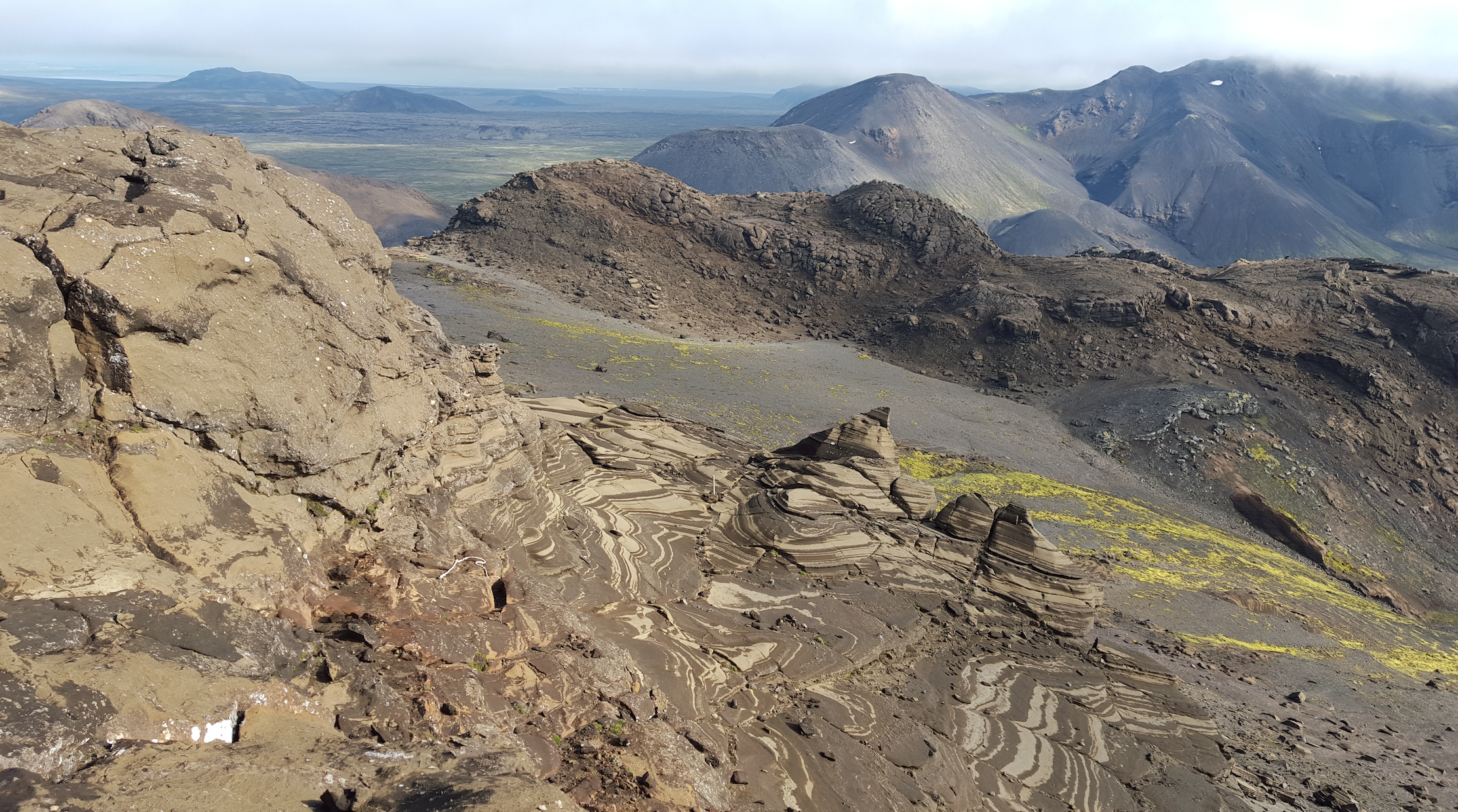Is carbon capture stored in basalt the climate savior of the future or not?
Léa Lévy, researcher in engineering geology, is receiving SEK 5.1 million from the Marianne and Marcus Wallenberg Foundation to investigate how much hope can be placed in capturing carbon dioxide directly from the air and storing it in the rock basalt.
Jonas Andersson – Published 19 February 2024

Can you tell us a bit about your project, what you are researching?
“More and more technologies are developed and discussed as part of the solution to climate change. Among them: carbon dioxide removal (CDR) and in particular Direct Air Carbon Capture and Storage in basalt (DACCS-b), where CO2 is taken from the air, dissolved in water, and then pumped into underground basalt formations. According to theory, CO2 reacts with the rock and turns into carbonate minerals and - a central assumption of this approach - stays in this mineralized form forever.”
That sounds very good?
“Huge investments are now being made based on the belief that DACCS-b will deliver. However, scientists still have doubts about whether mineralization is really happening at the scale and over the timescales promised by the companies behind the technology, and required for the technology to be safe and scalable. This is important because DACCS-b is currently a key tool in many climate action plans.”
But we don't know how well it works?
“There is still uncertainty among scientists about how well it works. I think it works, but it is not clear how much carbon dioxide is actually mineralized and how long it remains mineralized. There are various processes that could affect mineralization, which the current modelling used to estimate the rate of mineralization in the field does not take into account. There is also an uncertainty whether mineralization persists when there is a constant flow of incoming carbon dioxide.”
What do you hope to achieve with the project and what is the possible practical use of the results?
“We hope the project will help develop recommendations on how to better govern DACCS-b. We will start by looking at the language around DACCS-b. We will investigate how the assumption of permanence made it into public debate, which actors propose it and whose interests this debate serves. Next, we will analyze how the assumption of permanence is reflected in regulations and laws around DACCS-b.”
“Once we understand how actors tell the story of DACCS-b, and how law and regulations set the conditions for DACCS-b, we will look into the geology of things. We will use state-of-the-art geological methods to evaluate claims about permanence and develop an easy-to-use modelling tool that can help the general public fact-check stories about permanence of DACCS-b in specific settings. With that, we will evaluate whether current regulations sufficiently account for the risk that DACCS-b does not deliver as promised.”
You will also create a game?
”By constructive interaction between scientists who develop the technologies (engineers and to some extent natural scientists) and others who reflect on their practical effects (social sciences and humanities), we hope to lift the debate on whether engineering solutions to climate change are feasible and desirable pathways forward.”
“Given the intrinsic uncertainty of our knowledge on subsurface, invisible, phenomena, it is essential to define collectively what level of uncertainty is acceptable for a technology to be considered “safe” and “desirable”. This should contribute to more constructive discussions between groups of diverging opinions within academia and outside and hopefully to improved emerging carbon removal policies and monitoring practices.”
What does this grant mean to you?
“Today, many engineers want to contribute to sustainability goals. However, I believe that technology development is most often driven by personal curiosity and opportunities. We spend a lot of time imagining and describing the potential benefits of a technology, especially when we write research proposals, and we leave it up to someone else to leverage benefits and control damages.”
“History shows that many technological inventions that benefited societies in some aspects, were also detrimental on other aspects. For example, coal burning was initially seen as a solution to overconsumption of wood and then led to terrible air pollution problems, in addition to eventually increasing wood consumption.”
“Here, we acknowledge the potential of CDR technologies to mitigating climate change and at the same time we aim to clarify their limitations and potential negative impacts, to learn from history.”

Léa Lévy
Léa Lévy is Associate Senior Lecturer in Engineering Geology.
